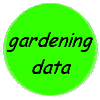Ten hints for a Wildlife Garden
To encourage wildlife to your garden, you should first consider what will make the garden an attractive place for creatures to live.
All creatures need two things for a happy existence - food and shelter.
Different animals require different types of food and shelter.
Here are ten things you can do to provide a good variety of both in your garden.
Ponds
Perhaps a pond is the best single thing you can put into your garden to attract wildlife. All creatures need water to exist, and many choose to live in it for all or part of the year. Installing a pond will benefit countless species. A pond should have shallow margins, deeper areas, gently sloping sides (to allow things to climb in and out), and plenty of aquatic plants.
Hedgerows and shrubs
Hedgerows and shrubs make excellent shelter for many animals, giving protection against the elements and predators. Hedgerows, in particular, provide 'corridors' along which wildlife can travel in safety. Many insects need this kind of shelter in which to overwinter, and many shrubs bear berries, a valuable food source. Try to include some evergreen species in your garden for the most benefit.
Compost heaps
An essential to any garden, the compost heap is a source of food and shelter for many creatures. Countless insects and invertebrates will be found there, living on the rotting vegetation, and hedgehogs and slow worms are among the larger inhabitants you might find.
Log piles
Rotting wood is common in natural habitats, but often rare in the garden. Many insects and invertebrates need this habitat (for instance, Stag Beetle larvae), and an old logpile left to rot will support them for many years, and can add an interesting feature to a dull corner where nothing much will grow.
Rock piles
Rockeries, dry-stone walls and piles of rock can give secure shelter to many larger species, and are particularly favoured by frogs and newts when out of the water. If you are building any stone feature in the garden, try to incorporate some voids (empty spaces) underneath the stones - frogs and toads in particular will soon take up residence!
Nectar flowers
Many insects are attracted to nectar rich flowers. Many modern varieties of plants produce little nectar, as they have been bred mainly for size and colour. Planting nectar rich flowers helps to redress the balance, attracting butterflies by day and moths by night.
Bird tables & Feeders
Winter is a quiet time in the garden, for both the plants and the wildlife, but the wild birds are still active, and regular feeding will bring much birdlife into the garden at this otherwise dull time of year, particularly in bad weather. Hopefully those birds attracted by winter feeding will stay around for the warmer months, particularly if you provide...
Bird Boxes
In urban areas particularly, nesting sites can be at a premium, and bird boxes will provide far more secure and comfortable nest places than would otherwise be available. There are boxes for most species, and even special boxes for bats.
Caterpillar food plants
Butterflies and moths require certain species of plants for their caterpillars to feed on. Planting them will ensure a plentiful supply of butterflies in your garden next year!
Don't spray!
Pesticides and herbicides should be avoided wherever possible in the wildlife garden. Chemicals intended to control one pest species can have damaging effects on many other friendly species. If you must use chemicals, try to use environment friendly brands. Better still, try to find alternative methods of control.
This article was originally published on the web on overthegardengate.co.uk however that website is defunct at July 2019. The copyright is with the original owners of overthegardengate.co.uk

